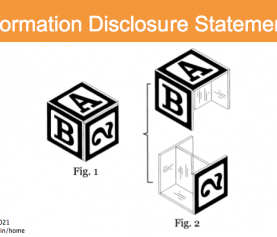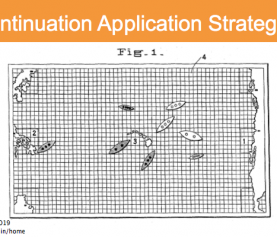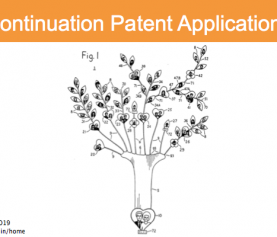First to file and takeout food
I ordered takeout food recently, and we had a mix-up at the restaurant that made me think of the US patent system, and its recent switch from a “first to invent” to a “first to file” system. How, you wonder? Read on to learn more about patenting an invention, and how patent strategy around first to file is similar to getting takeout food.
The wrong takeout food
That night, I placed the order, and because my friend Pat (names have been changed to protect the innocent and the hungry) was going to pick it up, I gave Pat’s name. Pat got there, picked up the order, and came over. I opened it, and it wasn’t our order: we ordered chicken massaman curry, pad woon sen, dumplings, grilled chicken, and more; this was vegetarian massaman curry, edamame, no noodles. Would have been fine, but I thought the other person would like their food, and we wanted ours. I called the restaurant, and we sorted it out pretty easily – it turned out the other order was placed by someone else named Pat, who I’ll refer to as Chris to avoid the confusion that led to our dinner mix-up. We traded orders, and everyone enjoyed dinner (turns out, when Chris showed up to trade orders, we knew each other – small world!).
First to file
So how is our takeout mix-up like the first to file patent system? The US patent system, like every other country’s, is a “first to file” system, meaning that whoever first files a patent application for a given invention has the right to receive a patent for that invention (with some subtleties – read on). This has been the law since March 16, 2013, when relevant provisions of the America Invents Act went into effect. Before that date, America had a “first to invent” system, meaning whoever came up with the invention first had the right to receive the patent. That law still applies for pending applications that relate to an application filed before that date.
For dinner that night, because Chris placed her order first, she was entitled to it – that’s like filing your application first. Even though Pat got to the restaurant first and picked up Chris’ order, which was placed first, Chris had priority. In the analogy, perhaps Pat commercialized the application first or made a public disclosure after Chris had filed, but Chris was entitled to receive the patent. An inventor who invents and files first is entitled to have a patent (or patents) issued for the invention, even if someone else later files an patent application for the same invention.
The twists
In the US, if you make a public disclosure of the invention before filing an patent application, and someone else independently invents and files a patent application for the same invention before you, your public disclosure has started a “grace period” – a one-year clock ticking. If you file a US patent application within that year, your patent application will have priority over theirs, as long as your earlier public disclosure was made before they filed. But be careful: that grace period applies only to US patent applications, and for many other countries, any public disclosure prevents you from being able to patent your invention. So if you disclose publicly, thinking you have a year to test your invention, you do: but only for the US. You will have prevented yourself from being able to get patents in most other countries.
The bottom line
The first to file system puts all inventors and companies into a footrace to file patent applications. If you don’t want someone else to beat you to a filing – or to that curry you’re looking forward to – you need to speak with a patent attorney about your innovations and a patent prosecution strategy that makes sense for you (such as my posts on patent application strategy, and a staged provisional patent application strategy). Think about that the next time you’re picking up takeout food – I know I will be.
Do you have questions? I’d be glad to hear from you in the comments. Call me at 617-340-9295 or email me at my Contact Me page. Or, find me on Facebook, Twitter, Google+, LinkedIn, Google Local, or Avvo.






